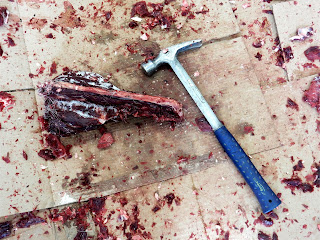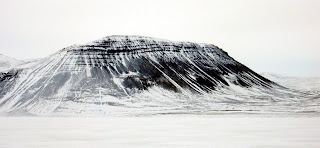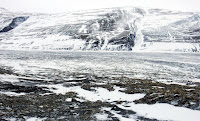The Annual Ceremonial Review (ACR) parade was held on Wednesday, April 21. Attendance was restricted to 50 people, including cadets, and facemasks had to be worn. I borrowed the school’s portable Phonak speaker so that everyone could hear me speaking during presentations & awards. The previous ACR was held in 2019.
The
cadets & I arrived at the gym at 5:30pm.
We needed an hour to set everything up.
I made things less stressful by preparing the awards, presentations, and
programs in advance. The cadets set up
chairs, tables, flags, and coffee & water urns. The corps provides coffee, tea, and hot
chocolate to attendees. The cadets
changed into their dress uniforms after the gym was ready.
Parents,
guardians, and community members slowly trickled in to find seats. There weren’t many because of restrictions,
but enough to put on a show. The parade
began at 6:30pm.
I
marched into the gym and received the General Salute. Canada’s national anthem was also
played. I inspected the cadets and
observed the March Past. Once the cadets
returned to their positions, I welcomed the audience and thanked them for
supporting the cadets.

Red Star Spring Biathlon Winner.
I moved on to awards & presentations, beginning with marksmanship badges. One cadet achieved Level 3 and another received Level 4. (Levels 3 & 4 are the top two in the cadet program). Next came physical training badges: two cadets achieved silver, one cadet got gold, and two cadets received excellence. The two winners of the spring biathlon received t-shirts. I then promoted one cadet to the rank of Lance Corporal.

Senior Spring Biathlon Winner.
Cadet promoted to Lance Corporal.
The local Army Cadet League of Canada (ACLC) Representative briefly took over to award golden painted bars to two senior cadets for serving 5 years in the cadet program. The Long Service Award is awarded to cadets who have been in the program for four years. They receive bars for each additional year thereafter. The bar(s) go(es) across the top of the medal.
The year-end awards were next on the program. I started with Best Attendance, awarding the cadet a backpack & t-shirt. Next, I called out the Most Improved Cadet and awarded him a t-shirt. His name would also be placed on a plaque. The Best Boots & Deportment cadet received a t-shirt, got to hold the large trophy, and had his picture taken. His name will also be placed on the trophy. The Top Female & Male Athletes held the large trophy for photographs and also received t-shirts for their achievements. The last year-end award was the Top Cadet Award, going to the platoon commander on parade. His named would be placed on the plaque, and received a backpack & t-shirt to take home. All the t-shirts were military themed.
Biathlon Coach (left), ACLC Rep (centre),
Parent (right). C.K. was unable to attend.
The ACLC Rep returned to publicly acknowledge three civilian volunteers for helping the corps awarded them specially made League coins. Those volunteers were: the biathlon coach, local photographer C.K. who did the recruitment posters, and a parent for preparing food for various cadet activities.
The parade ended with the Advance In Review Order (AIRO) and the playing of God Save the Queen. I then marched out of the gym. The cadets were dismissed to the back of the gym for a group photo. The flags were moved to the back and I returned for the photograph. Once I was satisfied that enough pictures were taken, I dismissed the cadets to the reception area. Reception lasted for 20 minutes.
The cadets & I cleaned the gym, and put everything away. Then I formed everyone up and congratulated them for putting on a successful parade. I also announced that cadets would be shutting down until August due to low attendance. The ongoing pandemic was to blame. I wished the cadets a great & safe summer, and dismissed them for the night.

















































